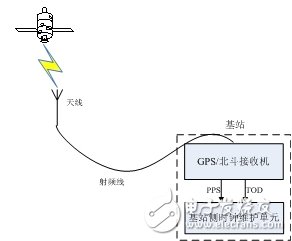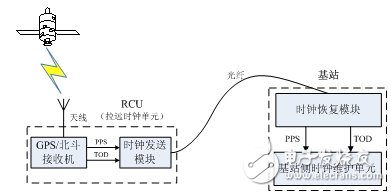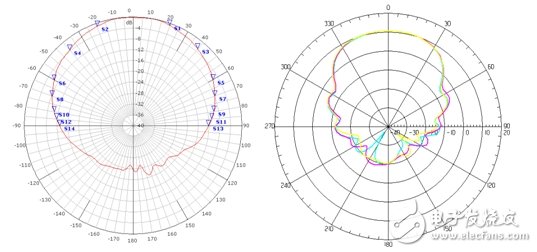TD-SCDMA is a TDD system that requires strict synchronization. At present, the TD system uses the US Global Positioning System (GPS) for timing synchronization, but the GPS timing system has some problems to be considered, such as inflexible construction, limited access and security. In response to these problems, China Mobile has proposed a GPS-based alternative to time synchronization. The current mainstream solution is based on the 1588v2 of the wired network clock and the Beidou satellite timing system independently developed by China. However, due to some reasons such as the 1588v2 large-scale network test and the prominent Beidou interference problem, the two mainstream schemes of GPS replacement have not been implemented on a large scale. The integrated satellite timing optimization system is a problem that China Mobile has teamed up with Datang Mobile for the traditional satellite timing system of TD-SCDMA, and innovatively proposes a practical timing scheme that can complement other GPS alternative technologies. Other developments in the use of satellite timing systems have played a significant role in promoting this. Among the three major 3G standards in the field of mobile communications, both CDMA2000 and TD-SCDMA are base station synchronization systems. The switching and roaming of base station operations require precise time control, otherwise serious system interference will be caused. At present, TD base station synchronization is mainly implemented by GPS system. Based on GPS security issues, it is considered that the Beidou satellite timing system independently developed by China will be adopted on the satellite timing system. The composition of the traditional satellite timing system is shown in the following figure: Fig.1 Schematic diagram of GPS/Beidou timing in the TD-SCDMA system of the current network The satellite antenna receives the GPS/Beidou satellite signal, transmits the RF signal to the GPS/Beidou receiver in the Node B through the RF feeder, the GPS/Beidou receiver recovers the clock, outputs the PPS and TOD to the phase-locked loop in the Node B, and locks the phase The ring sends the locked time signal to each major board in Node B that requires time synchronization. However, there are some issues that need to be considered in traditional satellite timing systems: (1) Engineering construction problems The installation environment of the traditional GPS/Beidou antenna is relatively strict, and it needs to be installed in a relatively open position. It is necessary to ensure that there are no large obstructions (such as trees, towers, buildings, etc.) around the antenna, and the shielding of the antenna should not exceed 30 degrees. To avoid the influence of reflected waves, the GPS antenna should be as far as possible away from metal objects with a size larger than 20cm and more than 2m; In addition, the traditional GPS/Beidou synchronization system uses RF cable to transmit. The RF cable has a thick wire diameter and poor toughness, which is not easy to bend, which is not conducive to the aesthetic and flexibility of construction. (2) RF feeder extension limit problem The traditional satellite timing system uses the RF feeder to transmit the clock signal, and the RF feeder has a large attenuation to the signal, which causes the RF feeder to be far away. Taking the Beidou timing system as an example, the Beidou antenna port signal power is generally -127dbm, the antenna gain is 43db, the Beidou receiver sensitivity is -100dbm, and only 16db (= -127+43+100) attenuation is allowed on the RF line. If LMR is used. -40 signal line (22dB/z), the RF line can only be farther away from the distance of 72 meters (=16÷22&TImes;100). If it is more than 72 meters, it is necessary to add a line hopper, which brings trouble to the construction, and it is difficult to realize the GPS/Beidou total antenna feeder. At present, there are a large number of scenes in the high-rise coverage system of dense urban areas and the distance between the antennas and base stations in the coverage of the airport subway tunnels, which imposes great restrictions on the installation of traditional satellite timing systems. (3) The problem of interference is outstanding The installation environment of satellite antennas is generally complicated, the construction of common sites is relatively common, and electromagnetic interference is relatively serious, which puts high isolation requirements for construction and installation. Among them, the disturbance of the Beidou timing system is particularly prominent. The Beidou working frequency is 2.5GHz, which is very close to the frequency bands of some wireless systems in use, so its receiving performance is more susceptible to interference. In practical engineering applications, in order to receive the Beidou signal normally, the Beidou receiving opportunity considers anti-interference measures such as narrow-band filtering, shielding and selecting the appropriate antenna installation position, which also brings difficulties to the construction, and also serves as a GPS alternative for Beidou. Increased the difficulty. 1. Overall plan introduction In response to the problems of the traditional satellite timing system, in order to adapt to a wider deployment scenario, China Mobile and Datang Mobile creatively proposed an integrated satellite timing optimization system solution. The integration mainly refers to the GPS/Beidou fiber remote design. The sky surface part integrates the GPS/Beidou antenna and the receiver. The PPS and TOD of the receiver output are transmitted to the base station Node B through the fiber remote method. The Node B clock recovery module restores the PPS and TOD and transmits the module to the Node B that needs to be synchronized. The base station design no longer needs to consider a series of problems such as the type of receiver (GPS/Beidou), model, manufacturer, size, etc., only the Node B and the remote receiver have the same interface standard and time transmission mechanism. Figure 2 GPS/Beidou receiver remote timing diagram The timing optimization is mainly to the problem of interference in the construction of the co-location, and the modification scheme of the satellite timing antenna. It can be seen from the current interference test analysis that the interference is basically caused by the ground equipment in the vicinity of the base station, and the angle of reaching the receiving antenna is different from the angle at which the satellite signal reaches the receiving antenna, and the frequency domain and airspace anti-interference measures can be comprehensively taken. The integrated satellite timing optimization system uses a combination of frequency domain filtering and spatial filtering. The frequency domain filtering uses a high-selective filter inside the antenna low noise amplifier to suppress out-of-band interference, while the spatial filtering uses a modified satellite antenna scheme. The integrated satellite timing optimization system uses a helical antenna as the basic technology antenna. The characteristics of the helical antenna are good directionality, high gain, frequency bandwidth, especially the frequency bandwidth. This provides conditions for the future Beidou and GPS to share a group of antennas. Various parameters are easy to control (eg beam width, gain, impedance, axial ratio). ), the device is consistent, easy to produce and debug. Figure 3 is a comparison of the ordinary GPS antenna with the lobe diagram using a spiral GPS antenna. The helical antenna has a strong inhibitory effect on the in-band interference. Figure 3 Comparison of ordinary GPS antennas and laps with 4 spiral antenna lobes 2. Product reliability design
With the improvement of people's quality of life, people's lifestyles have also become varied. Different kinds of recreational products are starting to appear in people's lives, such as electronic cigarettes. The emergence of e-cigarettes represents a part of young people's thinking and means that electronic products are beginning to show a trend towards diversity.
simply replace the pods. The Pod system uses an integrated pod rather than a tank for higher nicotine strength and provides low power traction. the Pod system is rechargeable and has a longer life and higher battery capacity than disposable electronic cigarettes.
Our company Pod system has a built-in 380mAh battery and a USB charging port on the bottom. In comparison, the Pod system has a built-in battery of only 180mAh, but the Pod system charges much faster.
Our electronic cigarettes are of rechargeable construction. The first time you use the charger to charge, it is recommended to use up the remaining power before filling up, this is to ensure the performance of the battery.
Vape Pod System Oem,Vape Pod Oem,Close Pod Oem,Thc Pod Disposable Shenzhen MASON VAP Technology Co., Ltd. , https://www.cbdvapefactory.com


I. Introduction